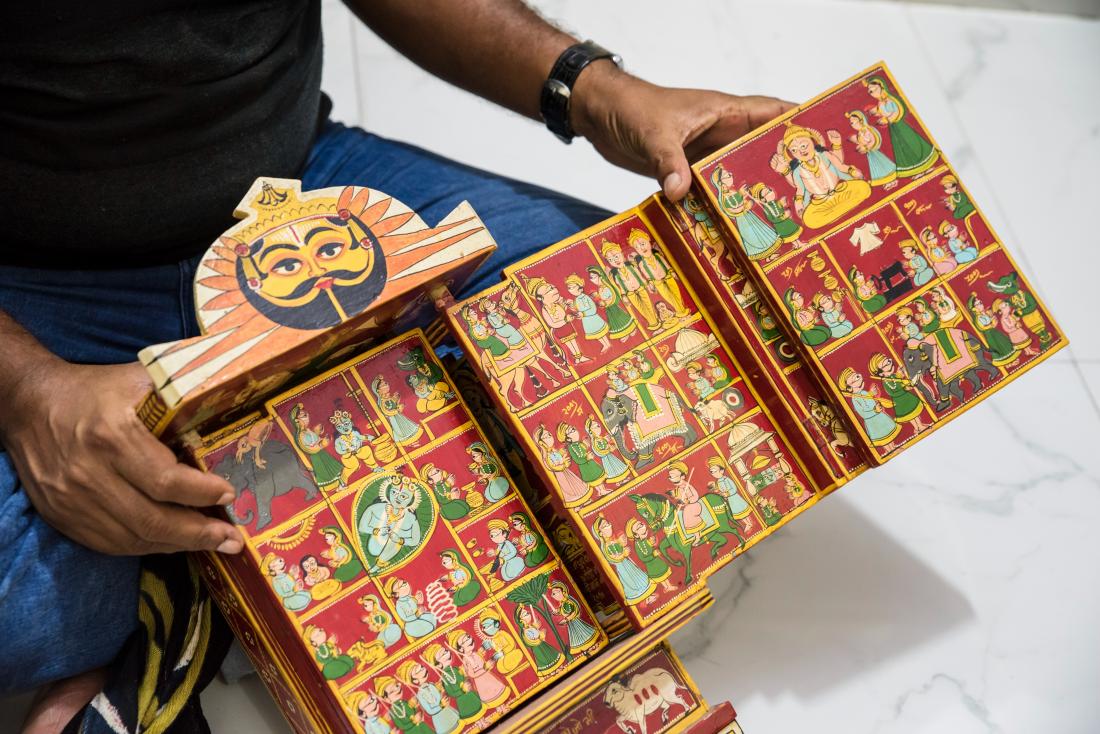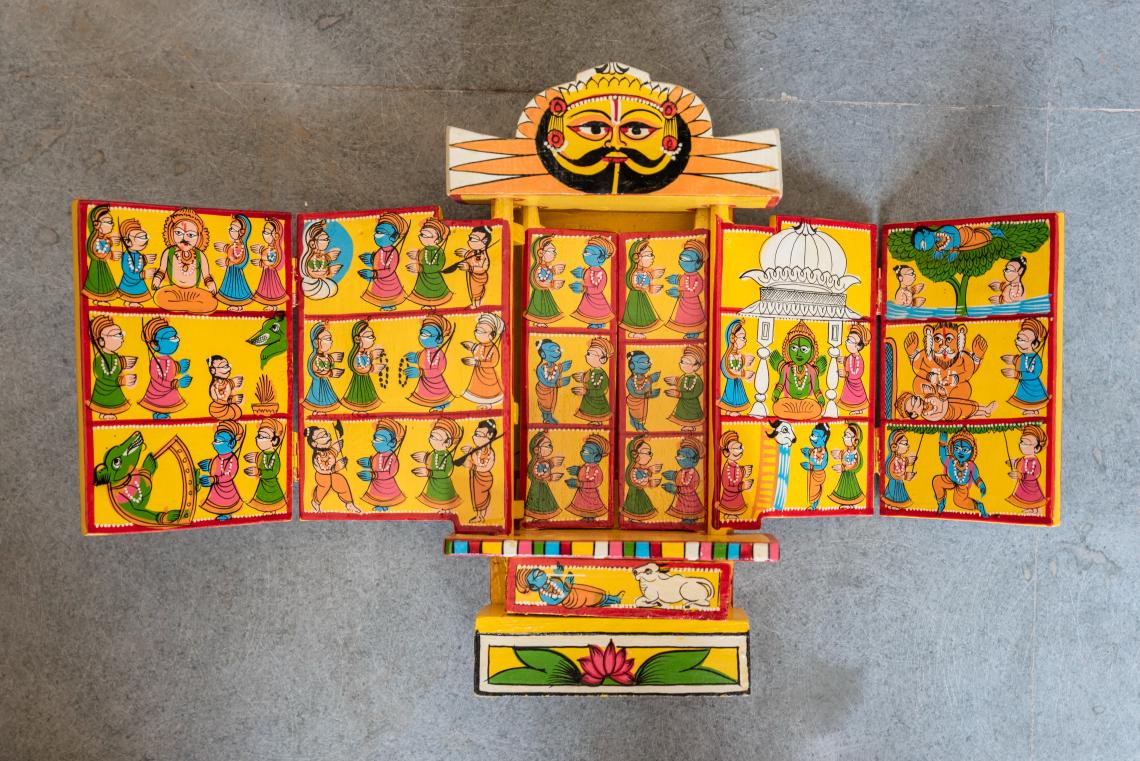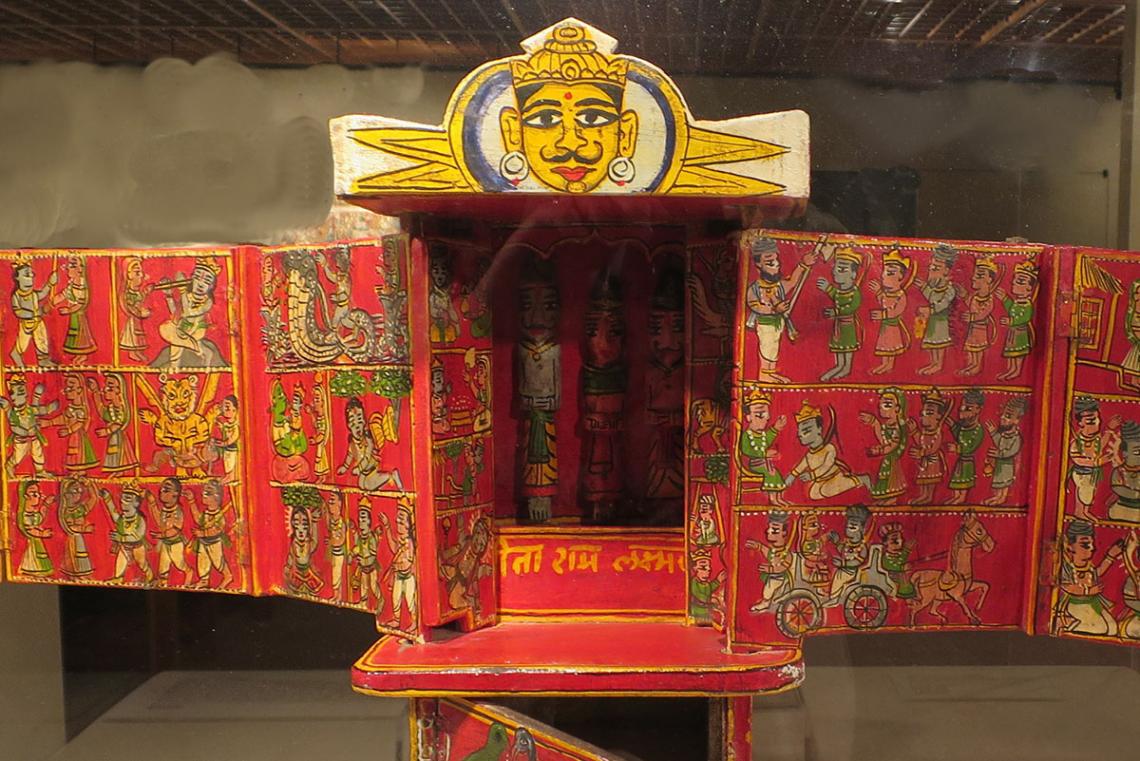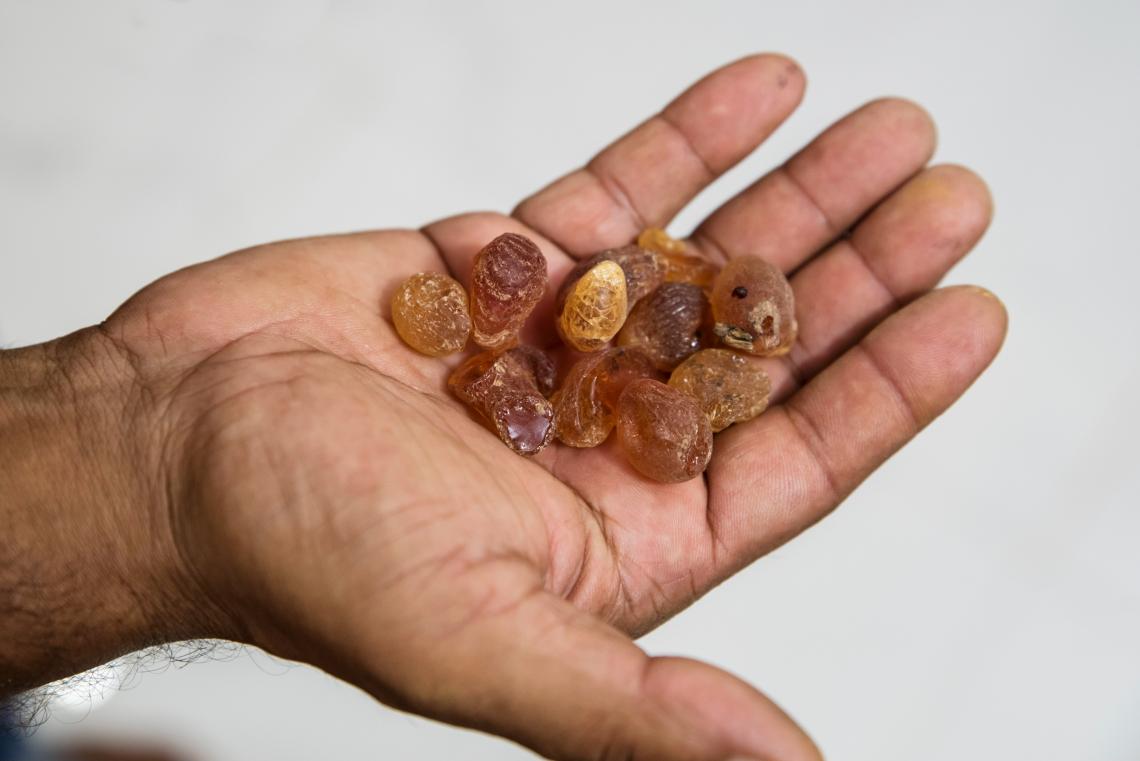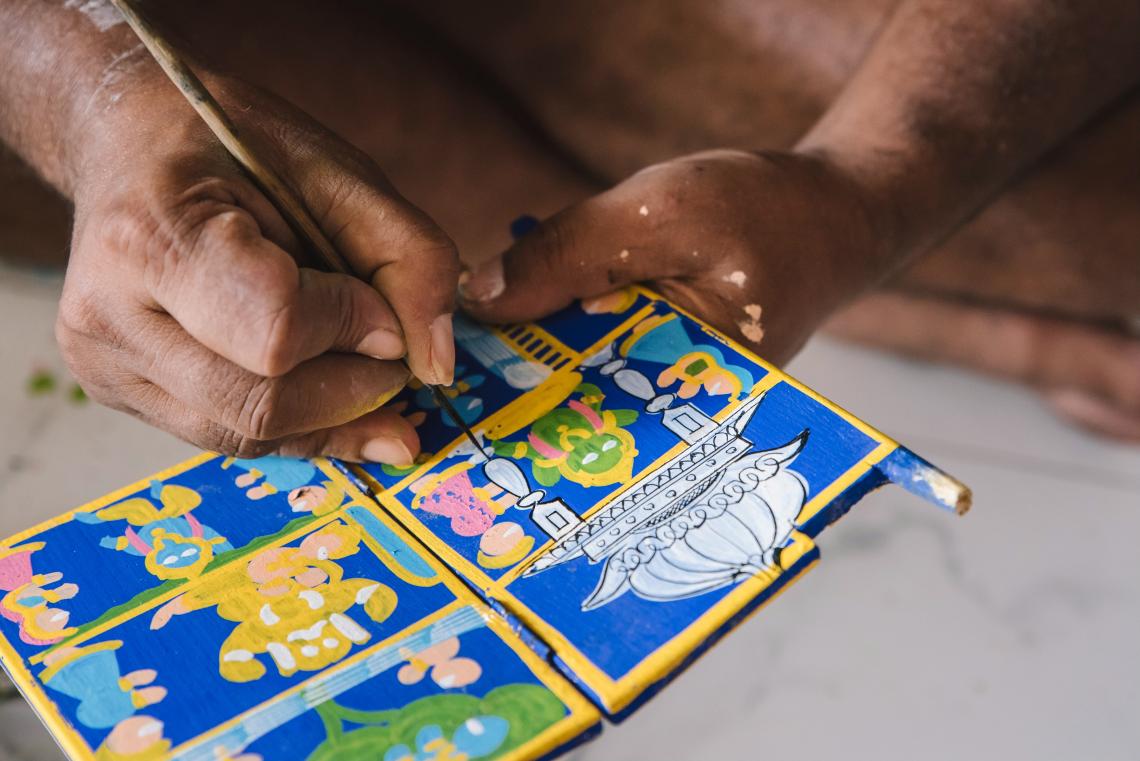Kavad Art: Satyanarayan Suthar with the Kavad that won him a State Award in 2008, Bassi Village, Chittorgarh, Rajasthan, India, 2017.
A painted, wooden structure, kavad is a portable shrine or temple used within the oral storytelling tradition called kavad banchana, popular in Rajasthan. The word kavad most likely comes from the Sanskrit words, kavaat, kapaat or kivaad, meaning “half a door” or “panel of a door.” The practice of kavad-making is primarily concentrated in Bassi in Chittorgarh, Rajasthan.
Kavad Art: Variations on the Traditional Kavad, Bassi Village, Chittorgarh, Rajasthan, India, 2017.
The tradition of kavad banchana involves carrying the kavad to different places, mostly homes of the patrons and narrating stories from epics such as the Mahabharata or Ramayana. The kavad involves a synergetic relationship between the maker, or suthar; the storyteller who narrates the stories painted on the kavad, the kaavdiya bhats, or bhanwar bhats; and the hereditary patrons to whom the stories are narrated, the jajmans. The suthars choose to use the surname Suthar, and in some cases add Jangid to their name to signify that they are descendants of Vishwakarma, the divine architect of the gods. Kavadiya bhats consider themselves to be descendants of Shravan Kumar, who, according to accepted folklore, was accidentally killed while carrying his parents to a pilgrimage. Since most shrines have images of the Bhakti saints as well as stories of the deities, Ram and Krishna, it may be assumed that kavads became popular after the Bhakti movement around the fifteenth century.
Kavad, Rajasthan, India, Photographer: Hiart, Early 20th century, Photographed: 2014, Paint on wood.
The structure of the kavad resembles a cupboard, or more accurately, a closed shrine, which is revealed using several folding panels hinged together and opened and closed like doors. These doors, in turn, have smaller painted panels containing scenes from the epics. Opening all the panels reveals an inner sanctum. Thus, the storytelling has a linear format that follows the opening and closing of these doors, narrating different parts of the story. Therefore, the construction of the kavads also resembles the architecture of temples where several thresholds lead up to the inner sanctum.
Kavad Art: Tree resin used for mixing colours, Bassi Village, Chittorgarh, Rajasthan, India, 2017.
Though the kavad sizes vary significantly, a traditional kavad is about 12 inches in height and consists of 10-16 painted panels depending on the length of the story that is to be narrated. Made from low-density wood from trees such as mango, semal, adulsa or neem, the construction begins with building the primary wooden structure. At times the wooden pieces are coated with khaddi, a kind of soil found in Bhilwara, which acts as a base for the painting. Traditionally, kavads would have a deep red base but these days a variety of colours are used. The suthar, who is also the painter in most cases, creates outlines for the characters in the different panels. For the smaller kavads, the suthar may skip the outline stage and directly move to painting the characters. The painted figures are completed with black outlines. Popular colours used to paint the figures include white, red, blue, yellow, green and black. Traditionally, these colours would be derived from minerals which would then be mixed with tree sap, but more recently, poster colours have come into use. Finally, these individual painted pieces are assembled and held together using metal or wooden hinges. When carried from one place to the other by the kavadiya bhats, the shrines are wrapped in a red or white cloth.
Kavad Art: Painting Process, Bassi Village, Chittorgarh, Rajasthan, India, 2017.
Usually, atop the shrine, there is an image of Surya, the sun god, with a moustache; at the base of the kavad is a donation chamber. The donations can be of two kinds — one towards the patron saint, Kundana Bai, to feed cows and the second towards the bhats themselves. Other features could include the presence of Jai and Vijay, the gatekeepers to Vishnu’s abode, painted on the front door of the shrine; images of the sun and the moon on the inner left and right flanks; and images depicting the life of Kundana Bai.
Today, kavads are also used as a visual medium to educate children about folktales. Attempts to preserve the kavad-making tradition include artist Akshay Gandhi’s adaptation Kavad Project as well as films and documentations by animator Nina Sabnani. The suthars of Bassi village have attempted to preserve the tradition of kavad-making by selling it in the form of decor objects, toys and souvenirs for tourists.
This article first appeared in the MAP Academy Encyclopedia of Art.
The MAP Academy is a non-profit online platform consisting of an Encyclopedia of Art, Courses and Stories, that encourages knowledge building and engagement with the visual arts and histories of South Asia. Our team of researchers, editors, writers and creatives are united by a shared goal of creating more equitable resources for the study of art histories from the region.


